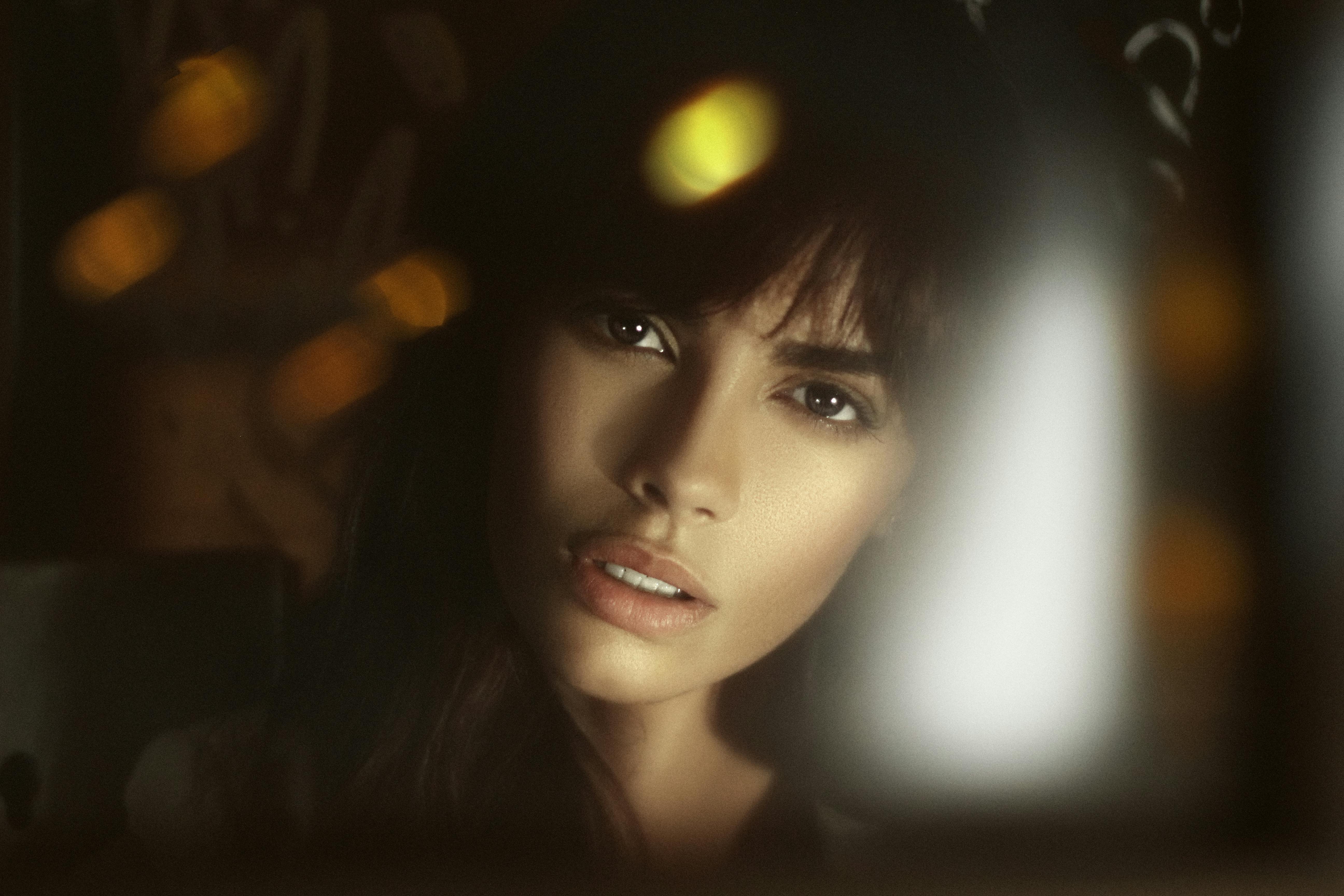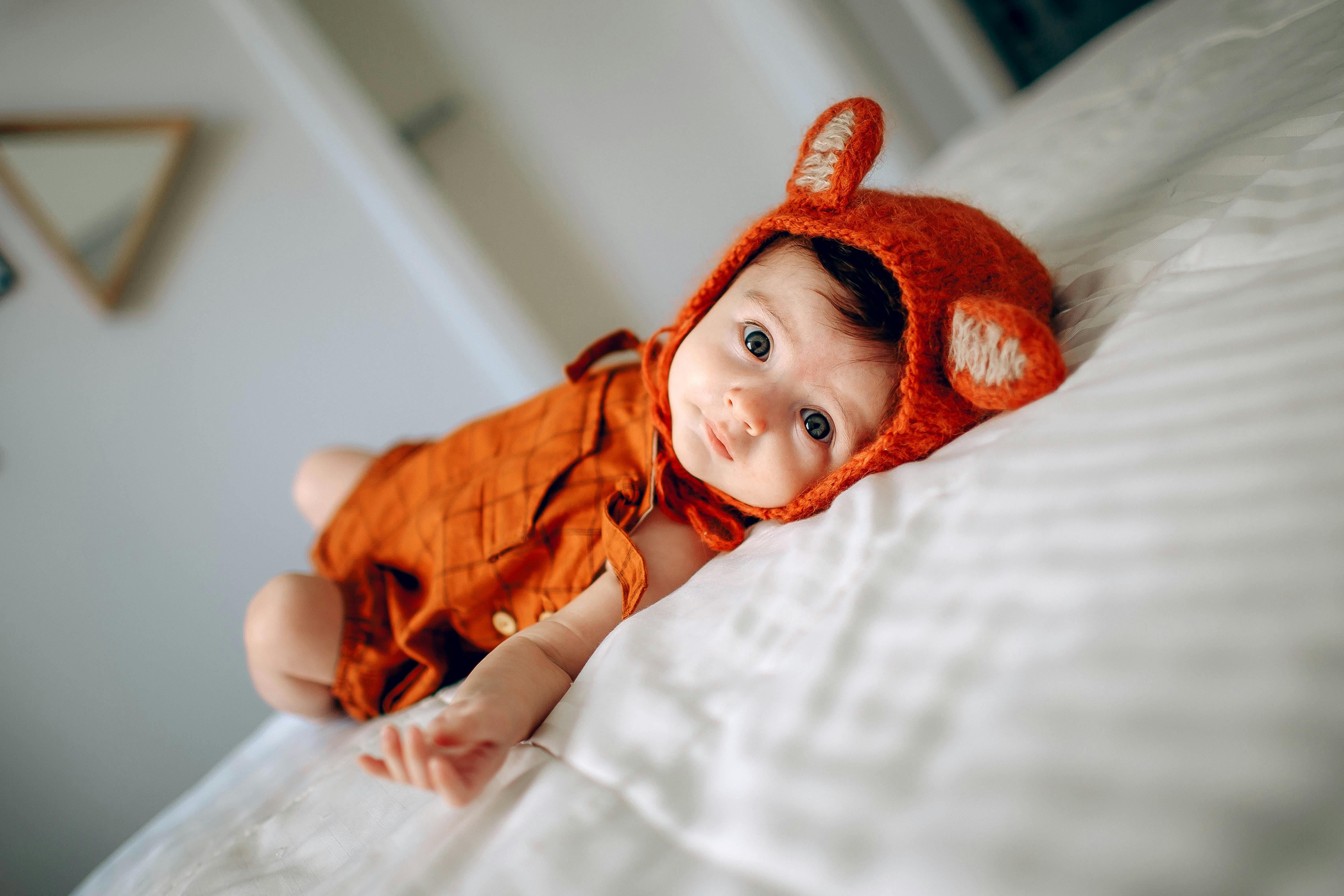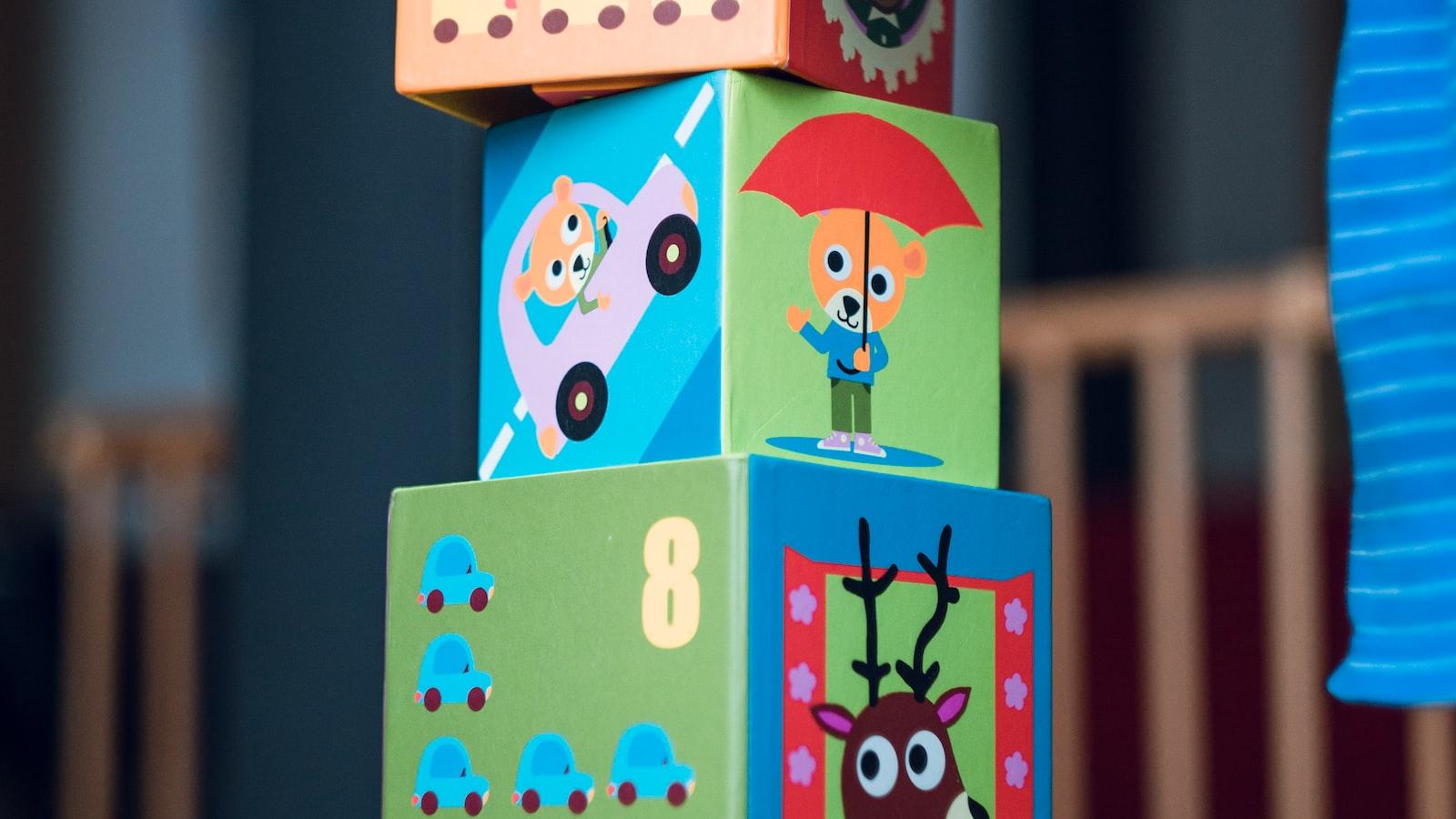Have you ever noticed your baby staring intently at a light bulb or other bright light source? You may have wondered why babies seem so mesmerized by these objects. It turns out that there are several reasons why babies stare at lights. In this article, we will discuss the various scientific theories as to why do babies stare at lights, as well as some tips for keeping your baby safe when they are around bright light sources.Babies may stare at lights due to their developing vision. As babies grow, their eyes are learning how to focus and track objects, so they may be drawn to the brightness and movement of a light. Additionally, infants are often fascinated by high-contrast images and patterns, which can be found in many light fixtures.
Staring at Lights and its Effects on Babies
Staring at lights can be a mesmerizing experience for babies. Bright lights and colors often attract the attention of babies, and they may become fixated on these lights. This phenomenon is known as optokinetic reflex, which is an involuntary response to visual stimuli. While this reflex often helps to keep a baby’s attention focused on an object or activity, it can also be dangerous for young children if they are staring at bright lights for too long.
Staring at bright lights can strain a baby’s eyes and cause them discomfort or even pain. It is important to ensure that any lighting in a baby’s room is not too bright and that the baby is not exposed to direct light sources like lamps or sunbeams. In addition, it is important to limit screen time for babies, as the blue light from screens can be especially damaging to their eyes.
Babies who stare at bright lights may also become overly stimulated and cranky due to the constant stimulation. They may become easily frustrated and have difficulty sleeping or focusing on other activities. Too much exposure to bright lights can also lead to headaches and increased irritability in some babies.
To avoid any potential issues related to staring at bright lights, it is important to keep lighting in a baby’s room dimmer than usual and limit their exposure to direct light sources. If your child does become fixated on a light source, it is best to distract them with another activity or toy until they look away from the light source. It is also important to limit your baby’s exposure to screens as much as possible so that their eyes do not become strained from blue light exposure.
Baby and Adult Vision
The primary difference between baby and adult vision is the level of development. Babies are born with immature vision, which means they have limited visual ability. As they grow, their vision develops and matures. Adults have fully-developed vision that allows them to see clearly and accurately, while babies are still learning how to focus and interpret what they see.
Babies’ eyes are also more sensitive to light than adults’ eyes, meaning it may be uncomfortable for them to be in a very bright room or outside during the day. Babies can also be easily overwhelmed by too much stimulation, so it is important to keep their environment relatively calm and free from distractions.
In terms of actual sight, babies have a much narrower field of view than adults do. This means that at any given time, adults can take in more information than babies can because their peripheral vision is more developed. Additionally, babies’ eyesight is not as sharp as adults’ because they lack the ability to focus on objects close up or far away.
Finally, babies struggle with depth perception more than adults do because their brains are still developing the ability to understand distances between objects. This means that when they reach out for an object, they may not be able to accurately judge the distance between them and it.
Overall, baby and adult vision differ significantly due to the level of development of each individual’s eyesight. Babies have immature vision with a limited field of view and difficulty focusing on objects both near and far away. They are also more sensitive to light than adults are. Adults have fully-developed vision that allows them to see clearly while being able to take in a wider range of information at any given time due to their greater peripheral vision and sharper focus on objects close up or far away.
Color Perception Difference between Babies and Adults
When it comes to perceiving colors, babies and adults differ significantly in their ability to interpret the world around them. Babies are born with limited color vision, meaning they are not able to distinguish between certain colors as well as adults can. They rely on brightness and saturation of a color to differentiate between objects. As babies grow older, their color vision begins to develop and they become more capable of distinguishing between various hues.
Adults, on the other hand, have more fully developed color vision which allows them to see the entire range of colors. Adults can detect subtle differences in hue that babies may not be able to detect. In addition, adults have a better understanding of how objects appear in different lighting conditions and are better able to adjust their perception accordingly.
Furthermore, adults have the ability to recognize colors by name whereas babies usually cannot do so until they are at least two years old. This is due in part to the fact that adults are more experienced with language which allows them to learn how different colors look when described with words.
Ultimately, there is a significant difference between babies and adults when it comes to color perception. Babies rely on brightness and saturation while adults have a much wider range of colors that they can recognize and differentiate between. Additionally, adults have better language skills which enable them to learn how various colors look when described using words.
Are There Benefits To Babies Staring At Lights?
Staring at lights may not be something that comes naturally to babies, but it can be beneficial for their development. Studies have shown that exposing infants to lights can help improve their vision and hand-eye coordination. This can help them develop better depth perception and spatial awareness as they get older. It can also help them learn how to focus on objects better, which will come in handy when they start school. Additionally, staring at lights can provide a calming effect on babies, which can help soothe them and relax them before bedtime.
Staring at lights also provides a form of stimulation for babies. Babies are more likely to actively engage with bright colors and contrast patterns that they see when looking at lights. This type of stimulation helps promote healthy brain development and encourages the baby’s natural curiosity. It also gives the baby something interesting to look at and explore, which helps develop their cognitive skills.
Overall, there are many benefits to having babies stare at lights. It helps improve their vision and hand-eye coordination, provides a calming effect, and encourages healthy brain development through stimulation. Therefore, it is important for parents to expose their infants to light sources in order for them to reap all the benefits it has to offer.

Are There Risks Of Babies Staring At Lights?
When it comes to babies and young children, it is important to take extra precaution when it comes to their safety. This is especially true when it comes to their eyesight. As all parents know, babies and young children are attracted to the bright lights of lamps, televisions, and other electronics. While this may seem harmless, there are potential risks associated with allowing babies and young children to stare at bright lights for prolonged periods of time.
The most immediate risk of allowing babies and young children to stare at bright lights for extended periods is eye strain. Eye strain can lead to fatigue, headaches, blurred vision, and other vision-related issues. It can also damage the delicate tissue in the eyes and cause permanent damage if not properly monitored.
Another concern regarding babies and young children staring at bright lights for too long is that the light can interfere with their natural development. Bright lights can disrupt their circadian rhythm, which affects their sleeping patterns as well as other important aspects of their development such as learning abilities, growth spurts, and emotional wellbeing.
Finally, exposing a baby or young child’s eyes to bright lights for extended periods of time can potentially damage their retinas. The retina is an incredibly delicate part of the eye that is responsible for processing light signals into images that are sent directly to the brain for interpretation. If exposed to too much light for too long a period of time without proper protection, the retina can become damaged and lead to vision problems later in life.
In conclusion, while it may seem harmless enough for a baby or young child to stare at a bright light from time-to-time, there are potential risks involved in doing so that could lead to serious consequences down the road if not monitored properly. Parents should use caution when allowing children access to any type of electronic device or source of light in order to ensure their safety and healthy development over time.
Reduce The Risk Of Babies Staring At Lights
It is important to reduce the risk of babies staring at lights to protect their vision. To do so, parents should make sure that all bright lights in the home are out of the baby’s reach or blocked. This includes ceiling fixtures, night lights, and any other type of lighting that could be potentially damaging to a baby’s eyes. Additionally, it is important to keep lamps and other items with strong light sources away from a baby’s eye level. When a baby is in their crib, it is important to make sure that there are no bright lights shining directly into their eyes.
Parents should also be aware of the potential risks associated with screens such as televisions and computers. Many screens emit strong blue light which can be damaging to a baby’s eyesight over time. Parents should ensure that screens are not placed too close to the baby and should limit screen time for babies under two years old. If necessary, use a screen protector or filters on screens to reduce blue light exposure for babies and toddlers.
When outside, it is also important to protect a baby from bright sunlight by using sunglasses or shady areas if available. Sunlight can be very bright on sunny days and can cause damage if a baby stares at it for too long or too frequently. It is also important to note that most car windows don’t provide adequate protection from sunlight so parents should use sunscreen or car window shades when driving with babies in the car.
Overall, there are many ways parents can help reduce the risk of babies staring at lights which can lead to vision problems later in life. By taking precautions like blocking bright lights from reach, limiting screen time, and protecting them from direct sunlight when outdoors parents can help ensure their little one’s eyesight stays healthy for years to come.
Different Types Of Lights Have Different Effects On Babies
Light plays an important role in the development of a baby. Different types of lights can have different effects on babies, depending on the intensity, duration, and wavelength.
Bright light can be stimulating and helpful for alertness and wakefulness during the day. It can also help regulate a baby’s circadian rhythm, which is important for their development. Soft lighting is often more calming and relaxing for babies, making it ideal for nighttime or when they need to wind down.
Blue light has been found to be particularly beneficial for babies because it mimics natural daylight. It helps keep them alert during the day while still calming them enough to sleep at night. Red light has also been found to be beneficial because it increases melatonin production in babies, helping them get better sleep.
The amount of time spent in each type of light should also be taken into consideration when determining what’s best for a baby’s development. Too much bright light can be overwhelming or overstimulating, while too little light may not provide enough stimulation or alertness during the day.
It is important for parents to consider all these factors when deciding what type of lighting is best for their baby’s development. Different types of lighting can have both positive and negative effects on a baby’s health and well-being and choosing the right one can make all the difference in their growth and development.

Conclusion
Babies are naturally curious and staring at lights is one of the ways they explore the world around them. While this behavior may seem strange to adults, it is perfectly normal for infants, and can even help their development. Staring at bright lights can stimulate their visual and cognitive abilities, as well as aid in developing their social skills. However, it’s important to keep an eye on your little one if they are staring at lights for too long or too close. By understanding why babies stare at lights, adults can better understand and support their development.
In conclusion, staring at lights is a normal behavior for babies that can help them learn and grow. While it’s important to monitor their behavior, it should not be discouraged as long as it is done in moderation.




